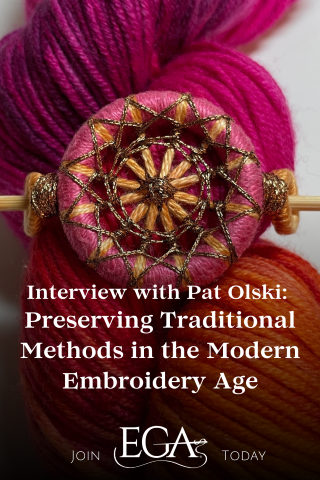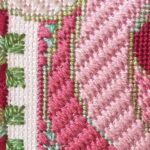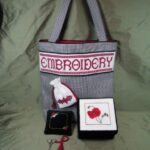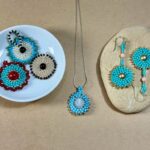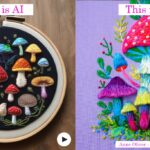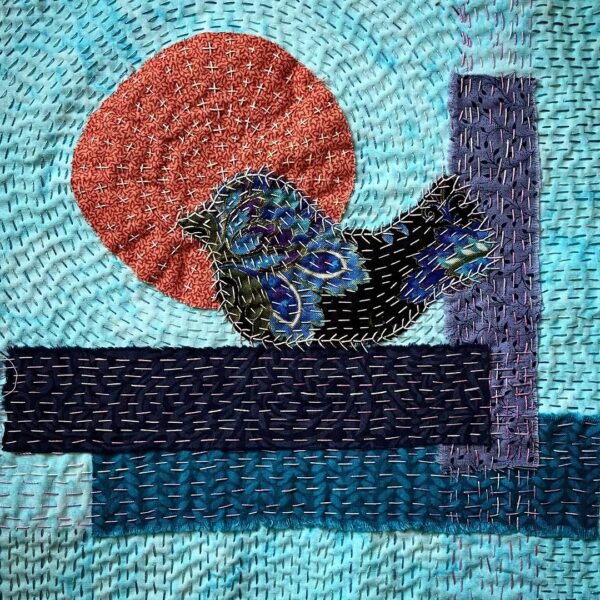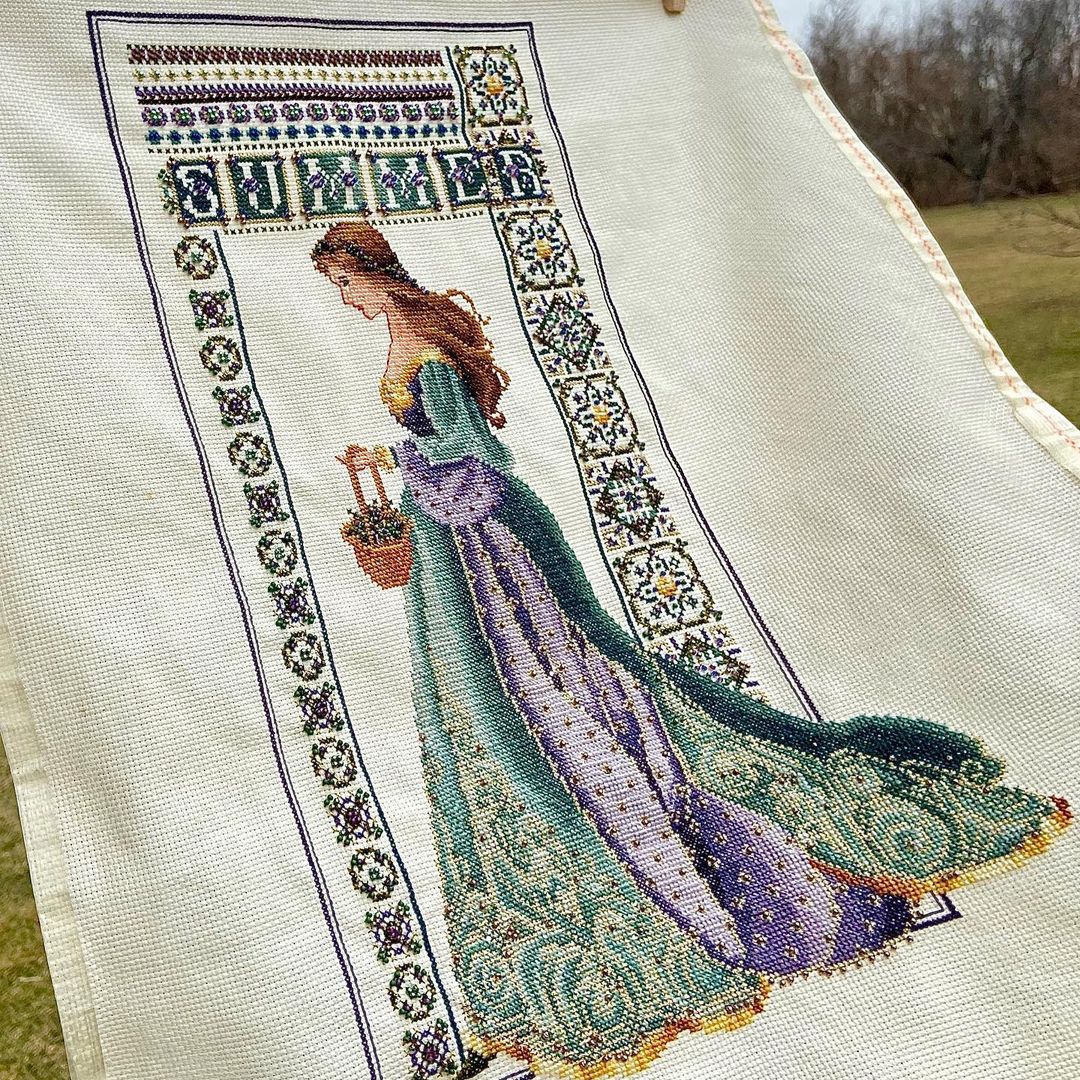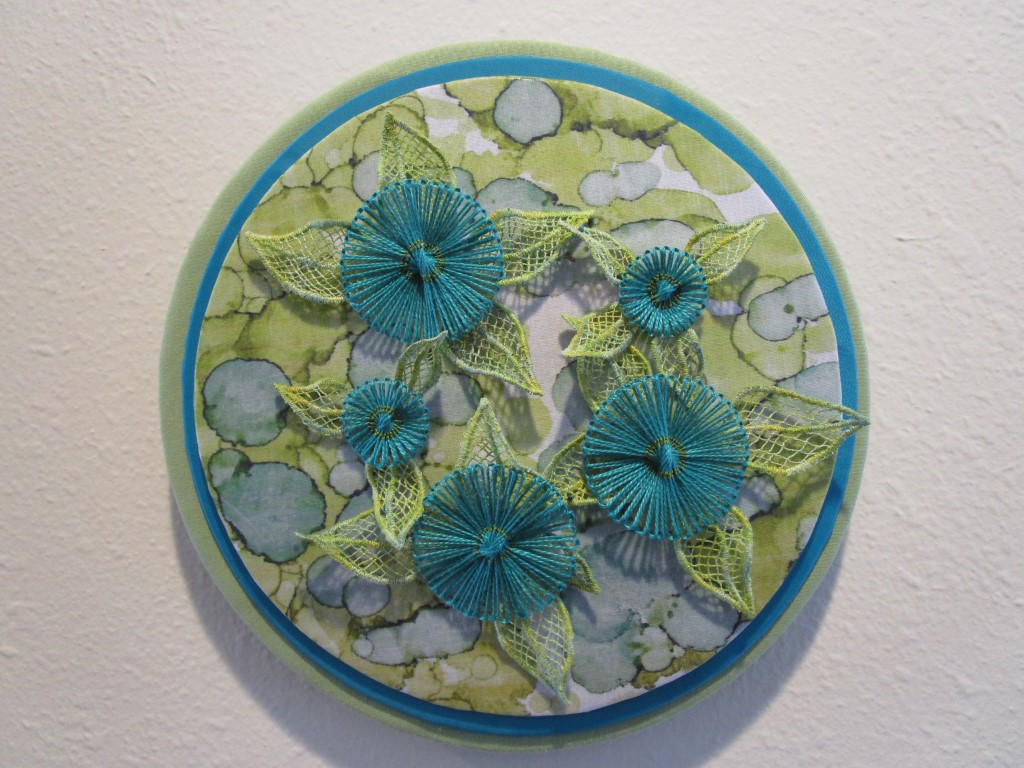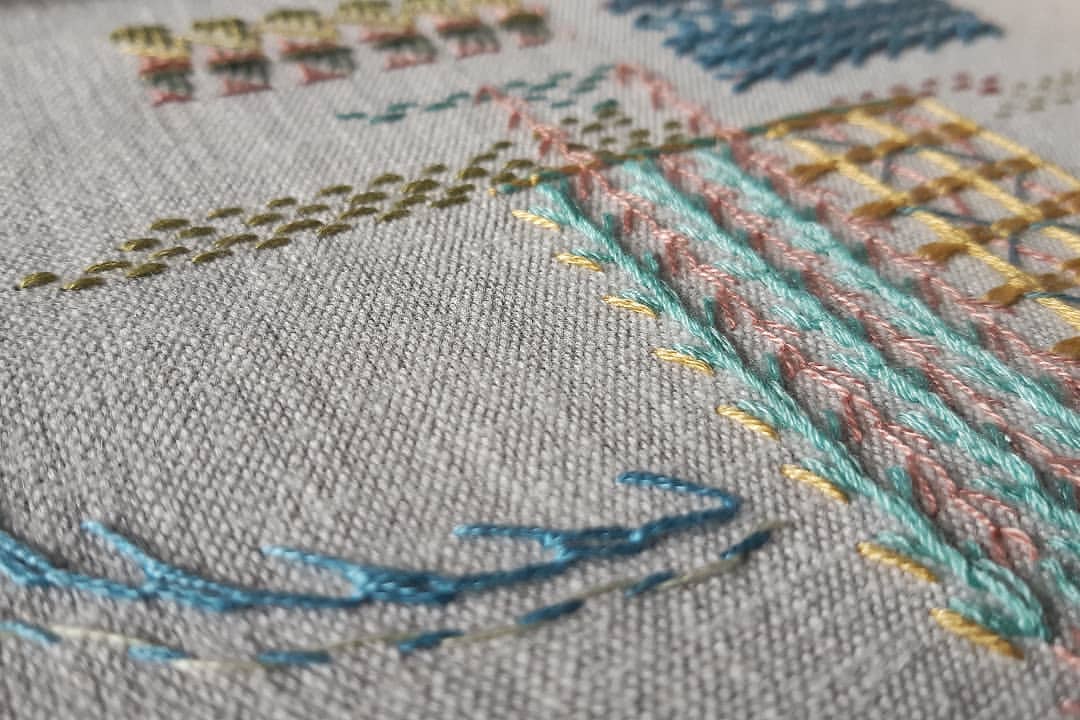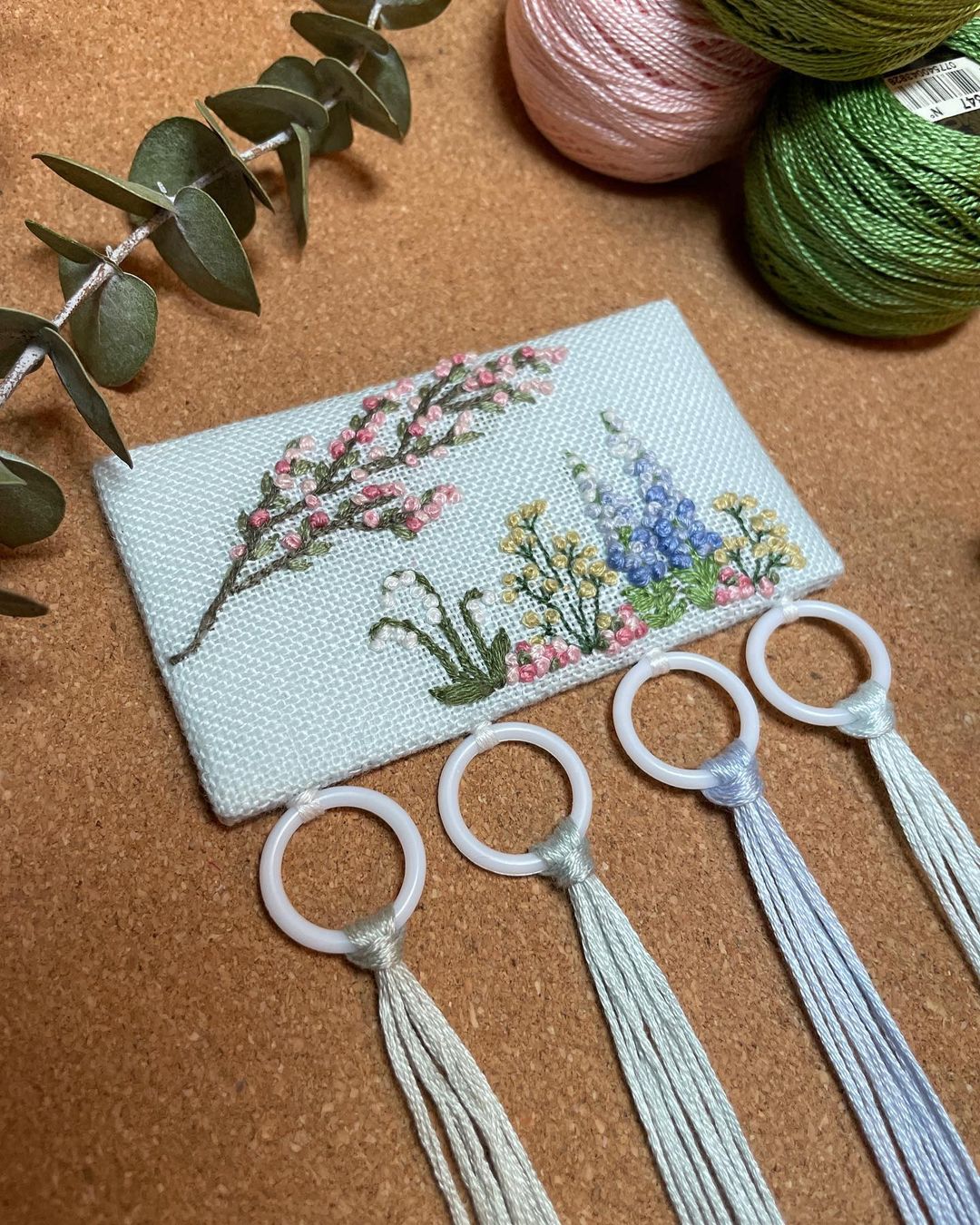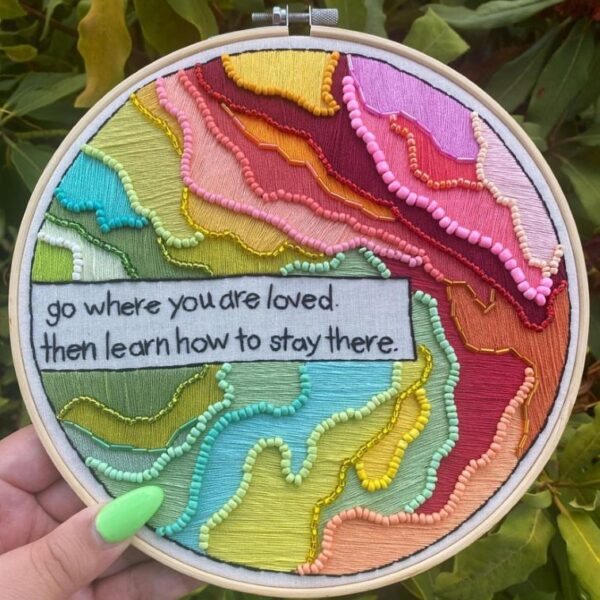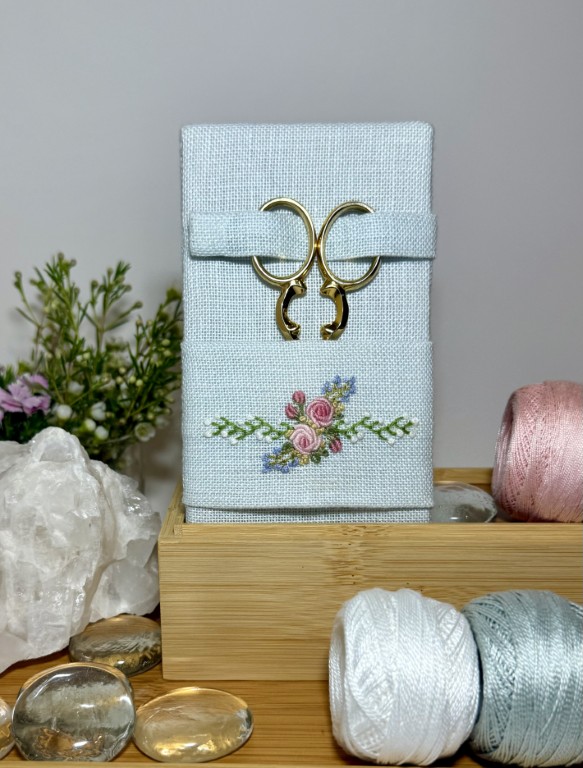
The upcoming Thread Blossoms Virtual Education Course with Pat Olski offers embroiderers the opportunity to stitch the Scissors Safe from her Thread Blossoms set, originally published in issues of Needle Arts Magazine from June 2022 through December 2023. Originally presented as a “Back to Basics” series, the set captivated embroiderers with its intricately detailed floral embroideries and artful design. Pat is a multi-craftual marvel, having published dozens of knit, crochet, and embroidery patterns in magazines and books like Piecework Magazine, Vogue Knitting, Knit Simple, Debbie Bliss, Noro, Inspirations Embroidery, and Needle Arts Magazine. Her love of traditional methods of craft carries over into her design work, infusing historical items like Dorset buttons with a fresh, contemporary beauty. We were delighted to sit down with Pat to discuss her upcoming virtual education course and learn more about her upcoming book, Thread Blossoms: Modern Embroidered Needlework Accessories.
You’re a multi-craftual artist, with an interest in needle art, knitting, Dorset buttons, and more. Where did your love of crafting begin?
I was so fortunate because my mother and grandmother, who were both career women, were also both consummate crafters. My grandmother was a meticulous seamstress, whose eye for detail could rival that of a professional tailor. She was very interested in couture, and she really helped me develop an eye for impeccable materials and classic designs. She also taught me early on the importance of not cutting corners—advice I didn’t truly appreciate until I was in my twenties.
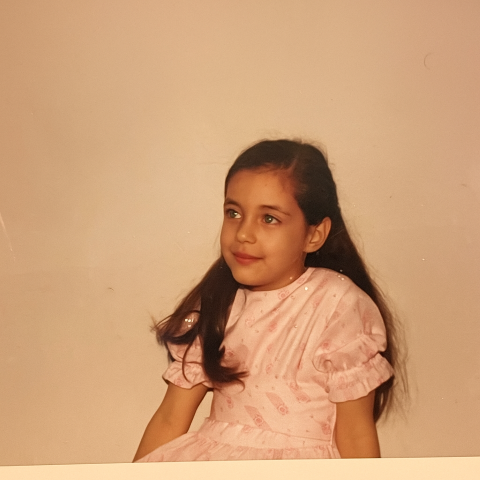
All images copyright Pat Olski unless otherwise noted.
My mother was a math professor who was fearless. There was no design in any craft that she was intimidated by, and I genuinely admired the way that the educator in her was able to parse each technique into something approachable, no matter how high level or arcane it was. Too busy to craft during the school year, during the summer she would fly through knitting, crewelwork, and needlepoint projects with equal ease, each a learning curve as well as an exercise in creativity. She always tweaked each pattern and design, melding artistry and mathematics, which was amazing to watch.
On our much anticipated vacation visits to needlework and knitting shops I was always entranced by the beautiful colors of the fabric and yarn, and always wondered about the people who created the patterns and were able to finish the fantastic samples that were hanging all over the racks.
My mother was so encouraging: my desire to buy the supplies and try each technique was definitely stronger than my desire to actually complete anything!
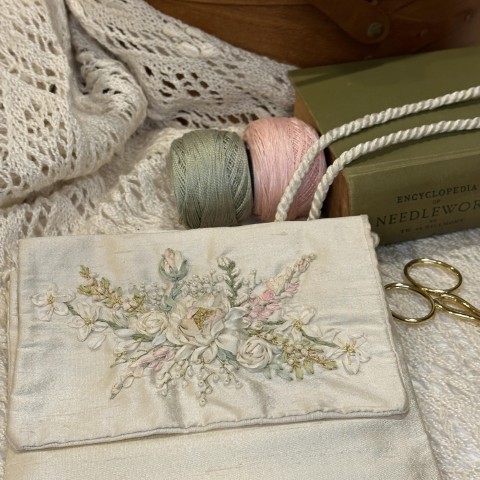
Where do you find inspiration for your designs?
I am passionate about historical and traditional needlework. The exquisitely wrought pieces that were created by stitchers of the past always fascinate me, and spur me to learn more about the items, the process, how they learned, and where they got their materials. I am a big fan of art museums, and adore seeing paintings and sculptures that present a glimpse into those mysteries.
I try to meld things from the past into projects that are appealing today. Even though we no longer need to make our own buttons for our clothing, interpreting a modern iteration of a Dorset button as wearable twenty-first century art is a great way to keep 400-year-old methods alive and strengthen our connection to the makers who came before us.
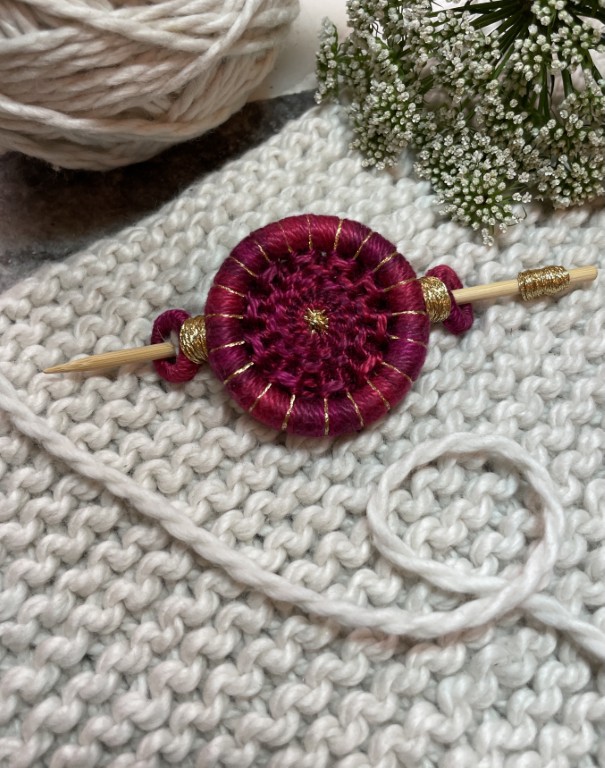
At many points in my career as a professional designer, I was sent yarn or thread that was not something I would normally choose, or I was asked to design something that was not necessarily my style. Those instances wound up being very beneficial—in fact, they made me a stronger designer, and they taught me to open my eyes to colors and trends that were out of my normal scope. As a result, sometimes if I hit a wall, I now deliberately turn to a color or technique that is not my favorite, and sometimes it really sparks my imagination.
I am generally drawn to blues and greens, and when I was designing shawl pins for my book “Crafting Thread Shawl Pins,” I realized that I needed to add some designs in warmer colors.
Those were more of a stretch for me to design, and ironically, some of those have turned out to be the most popular designs in the book, and on social media.
Oh, and I am very partial to flowers!
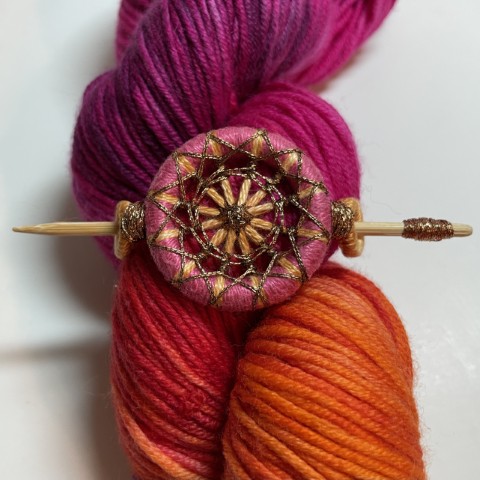
What does your design process look like?
For someone who always has a number of ideas percolating, I am actually rather methodical, and try to balance my love for designing and actual needlework with my appreciation for order.
Once I have an idea, I jot it down in a notebook that I keep for ideas. I then choose the fabric and threads or yarn. That can take me a while, and many times experimenting with different colors and textures of fibers and textiles often inspires me to tweak my original design. There are so many stories waiting to be told in those threads!
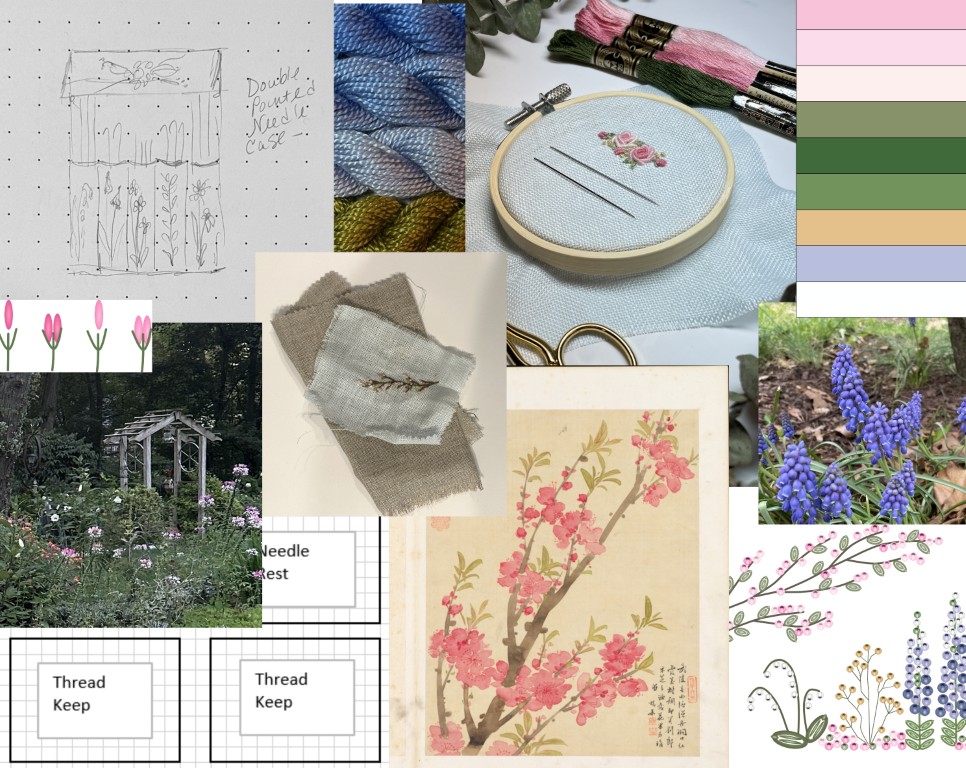
I type all of the details I can into a Word document as I am stitching—it is so easy to forget which color floss or pattern intrigued me the night before, especially if I am stitching a lot. If something is going to be three-dimensional, I will play around with proportions by sketching samples in a graphic design program, or by folding fabric and making mock ups until I am happy with the results.
Once a design is on its way, I often jump ahead and start drawing the diagrams while I am stitching, and while they are still fresh in my mind. I find it satisfying to address each part of the pattern-making process as I go along. I usually stitch in front of my computer so I can document my progress, and I take many pictures along the way.
I am an inveterate “blocker,” so whether it is knitting, crochet, needlepoint or embroidery, I enjoy seeing a design come to life once it has been freshly blocked.
After I am finished with a project, I find it very therapeutic to clean my work area, and put all my supplies away, so that my mind is clear and ready to move onto my next design.
Do you have a favorite design? Why is it your favorite?
Like so many designers, I would have to say that it is usually my last design : )
I just finished a biscornu that is topped with a Dorset button—a pattern that will be available for purchase this week on YarnWhirled.com. The design features lilies of the valley and lilacs which are some of my favorite flowers. I have it on my desk in front of me, and it makes me smile.
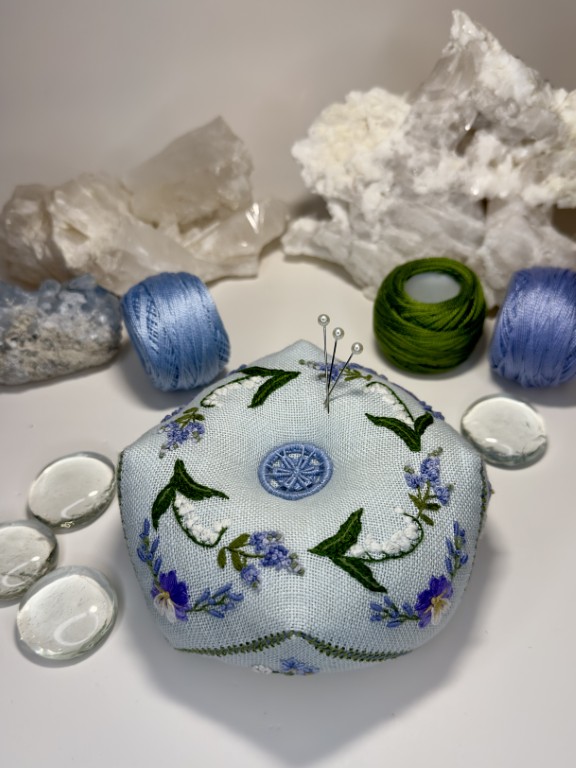
As far as my professional career goes—I designed a mosaic sweater that appeared in Vogue Knitting Winter 2014–15 that I was very proud of. It was a very laborious sweater to design, as the technique was unfamiliar to me at the time, and the yarn was very fine, but I was delighted that it came together the way it did, so that would definitely rank as one of my favorite knitted pieces.
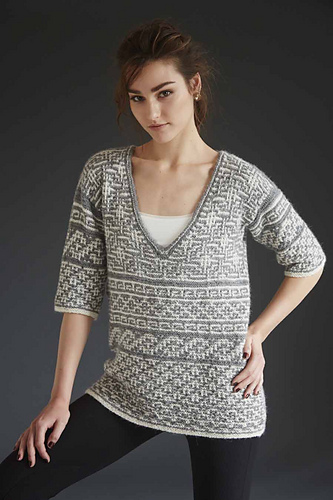
I am smitten with Irish crochet, and made a dress that was on the cover of Vogue Knitting Crochet magazine (also in 2014). I was delighted to be able to translate a venerated historical technique into something modern and makeable.
My favorite piece from my upcoming book Thread Blossoms is the Cottage Garden Knitting Needle Case. There is something so engaging about wildflowers.
Haha—don’t even get me started on my favorite Dorset buttons.
Thread Blossoms originally appeared as a series of projects in Needle Arts Magazine from June 2022 to December 2023. What inspired you to present the Thread Blossoms Scissors Safe as a virtual education course?
I believe it is important to create appealing projects that can help people learn something new, and that don’t require an impossible outlay of time or materials. Enjoyment is vital to keeping stitchers interested and to keeping these important crafts alive.
The Scissors Safe makes use of a number of fundamental surface embroidery stitches, but also encompasses unique construction techniques, so it is suitable for both intrepid beginners and advanced stitchers.
It is a stash project, which gives stitchers the leeway to make their project in their favorite colors, or to match their own needlework accessories.
Embroidery scissors are my weakness, and the Scissors Safe is a fun and pretty project that is also useful.
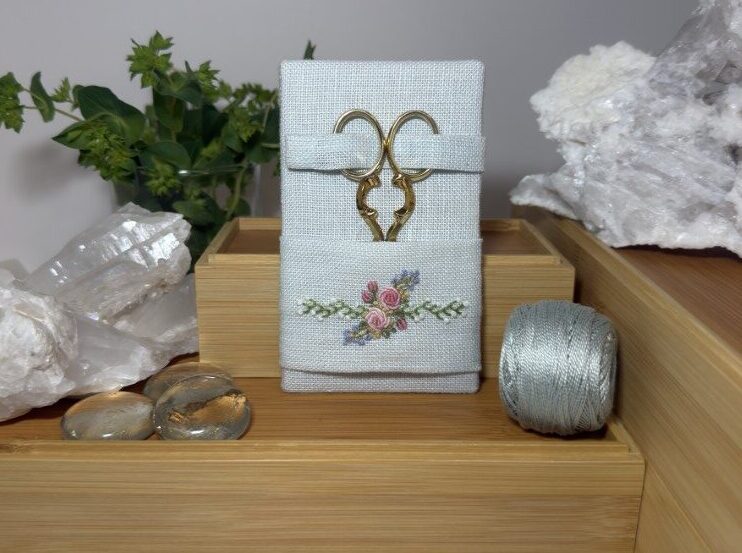
What should interested embroiderers expect from taking the Thread Blossoms virtual education course?
It will be fun! I have very comprehensive instructions and diagrams. There are step-by-step explanations for the stitches and the construction techniques. I will also include directions for a decorative edge stitch that is not part of the Needle Arts pattern. I welcome questions, and am happy to work with EGA students.
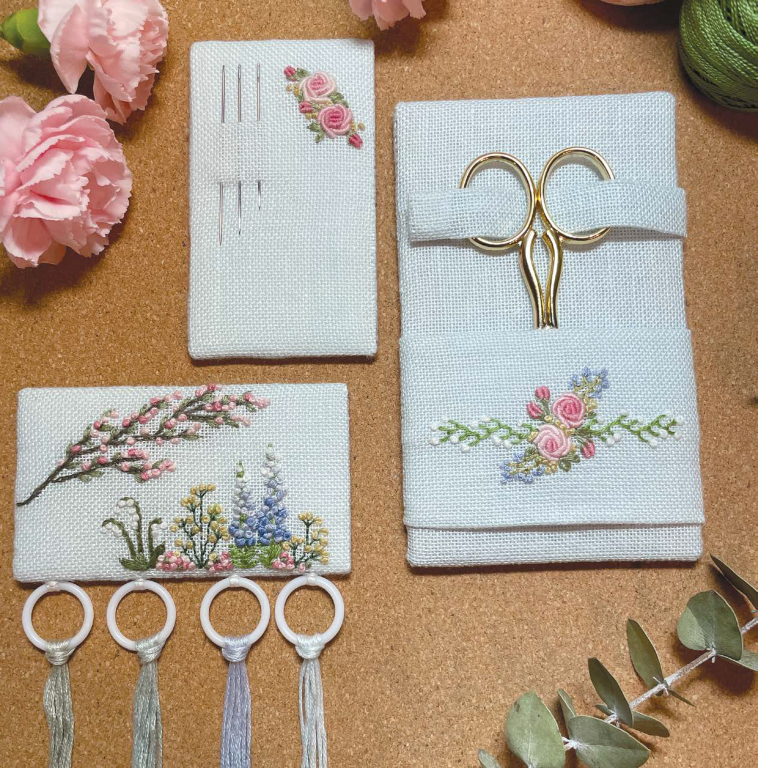
Thread Blossoms is now also the subject of your forthcoming book, Thread Blossoms: Modern Embroidered Needlework Accessories. Tell us about your new book: what kinds of projects does it contain, and are they beginner friendly? What do you hope readers take away from it?
Thread Blossoms grew from the first project that was featured in Needle Arts: the Rose Needle Keep. The initial projects were devised as a way to teach the basics to embroiderers, via patterns that highlighted a particular stitch.
The more of them that I made, the more I enjoyed the challenge of coming up with designs to embellish projects that were both unique and functional accessories for stitchers. Since the first one was made on blue linen, the rest needed to be as well.
The original designs were each meant to teach a single stitch, and therefore each piece in the set has a different design. I like the fact that the pieces all coordinate so well, even though they all have different patterns. The other five pieces I have added include holders for thimbles, double pointed knitting needles and/or crochet hooks, stitchmarkers, needle threaders, and a small box for supplies.
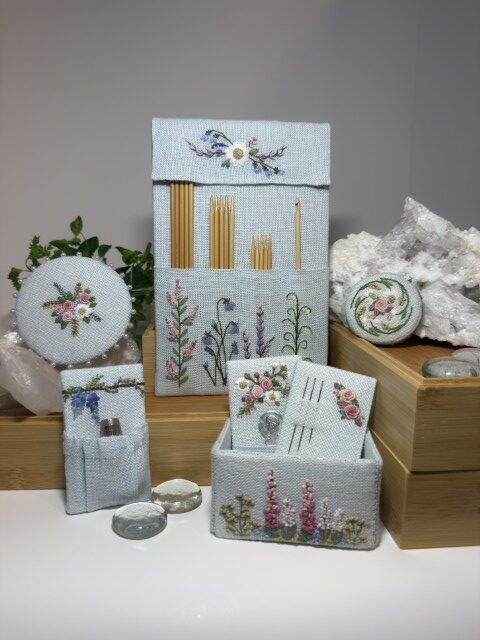
I have worked very hard to create clear instructions, diagrams and drawings, so I do think all of the projects are something that a beginner could tackle with a little practice. But I also think that the construction techniques will interest stitchers who are already familiar with the embroidery stitches. I also think they would make lovely gifts!
I am thrilled that the book is to be published very shortly. I will update my website (yarnwhirled.com) with the publication date.
And now, an impossible question: do you have a favorite type of crafting? If so, why is it your favorite?
Oh, that is a tough one. I think the common thread that links all of the crafts I do is my desire to find out everything I can about historical and world textile methods, and to practice them today. So, I don’t think it matters which type of needle, hook, or fiber I am using, I think I favor crafts that are based on something from the past or from a different culture that I can try to master in the present.
I do know that I am enamored with intricate work and fine gauge fibers—especially lace knitting, Irish crochet, and whitework embroidery.
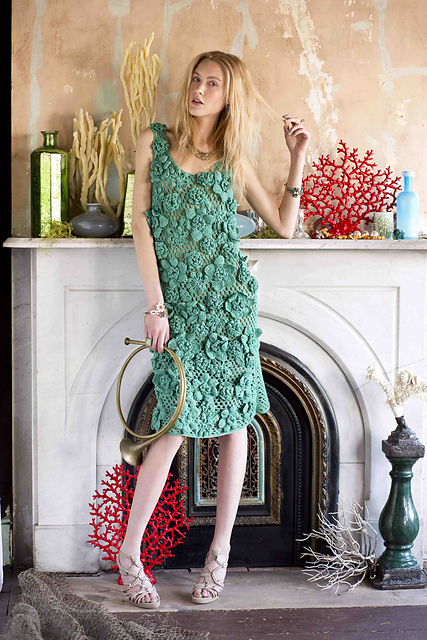
What are you working on right now? Are there any color, design, or needlework trends or aesthetics you’re drawn to right now?
On the heels of the Thread Blossom book, I have another book that is set to be published in 2026, a stealth project in the works based upon a particular heritage needlework, and I have been having a great time designing some pieces in techniques that were unfamiliar to me.
On the personal front, I recently finished a number of ringbearer pillows for family members and friends, and I got to play with silk and silk ribbon embroidery which was something I hadn’t done for a while, and that I found to be utterly captivating.
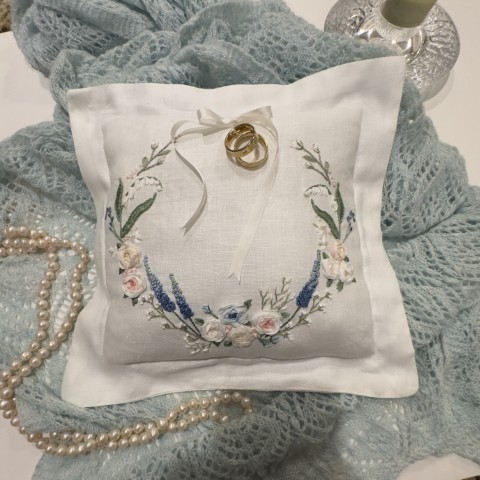
I have some knitting and needlepoint pieces promised to my sons, and another Estonian lace knitted shawl of my own I hope to finish soon.
So, to answer your question—I am interested in all of them!
Where can interested crafters learn more about your work and follow you for upcoming projects (website, social media, etc)?
I am looking forward to meeting more stitchers for the EGA Virtual Education course. My website is Yarnwhirled.com, and I love having visitors!
I also welcome stitchers to join me on social media @yarnwhirled on IG and Threads, and @PatOlski on Facebook, where I am a member of the EGA group and the Making Dorset Buttons group.
Happy Stitching!
Pat
